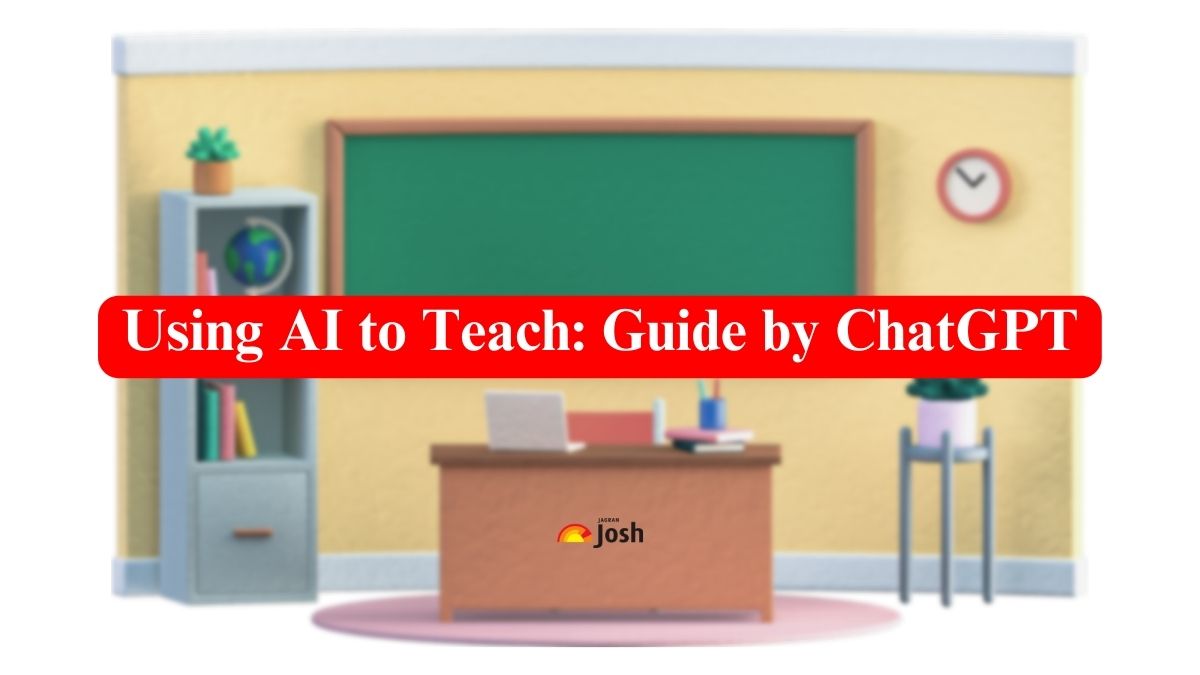Teaching With AI – A Guide For Teachers Using ChatGPT In Classrooms: Artificial Intelligence (AI) is a groundbreaking technology with the potential to transform various aspects of our lives. AI enables machines to imitate human cognitive functions like learning, problem-solving, and decision-making. It employs advanced algorithms, vast data sets and powerful computing resources to perform tasks previously reserved for human intelligence. Ranging from school education to university-level education, AI has diverse applications in the education system as well. As AI advances, its integration into the daily life of teachers and students brings both unprecedented opportunities and challenges.
ChatGPT and School Education
Ever since the rise of OpenAI’s platform ChatGPT, teachers and educators from all over the world debated and raised concerns over the advantages and disadvantages of Artificial Intelligence in education.
Pros and Cons of AI in School Education
AI in school education offers significant potential benefits but also presents challenges.
|
Pros |
Cons |
|
1. Personalised Learning: AI can adapt to individual student needs, providing tailored lessons, assignments, and assessments, which can enhance learning outcomes. |
1. Lack of Human Interaction: Over-reliance on AI can reduce the valuable face-to-face interaction between teachers and students and also impact fruitful classroom discussions. |
|
2. Efficiency: AI can automate administrative tasks, grading, and data analysis, reducing the burden on teachers and freeing up their time for more personalised instruction. |
2. Data Privacy Concerns: The use of AI in education often involves collecting and analysing student data, raising concerns about privacy and security. |
|
3. Accessibility, Engagement and Instant Feedback: AI-powered tools can open doors to vast amounts of information. It can also assist students with disabilities by providing more inclusive learning ways. Interactive AI-driven content, such as educational games and chatbots, can make learning more engaging and its instant feedback can enhance students’ learning experiences. |
3. Cost and Technical Challenges: Implementing AI in schools can be expensive, making it inaccessible for some educational institutions and amplifying educational disparities. |
Effective implementation of AI in education requires careful consideration of these pros and cons to maximise the benefits while mitigating the drawbacks.
How Teachers Can Use ChatGPT in Classrooms
Role-playing Challenging Conversations: Teachers can encourage students to use ChatGPT to simulate conversations with specific personas, helping them gain newer insights and perspectives.
Building Tests, Quizzes and Lesson Plans from Curriculum Material: Use ChatGPT as an assistant to create quizzes, exams, and lesson plans based on curriculum materials. You can share the curriculum to ChatGPT and then ask for things like fresh quiz and lesson plan ideas that use modern or culturally relevant examplesIt provides fresh ideas and ensures inclusivity.
Support for Non-English Speakers: Students, especially non-English speakers, should use ChatGPT for translation and improving English writing skills, recognising the importance of English proficiency in academics.
Teaching Critical Thinking: Teachers should also teach students to use AI tools like ChatGPT responsibly. They should motivate students to engage in critical thinking, encouraging them to question the credibility of answers and verify information from primary sources. This approach fosters original critical thinking and problem-solving skills.
Like the internet itself, AI tools like ChatGPT is also a powerful tool that can help both teachers and students if used thoughtfully. The education community can benefit a lot from this boon of technology.


